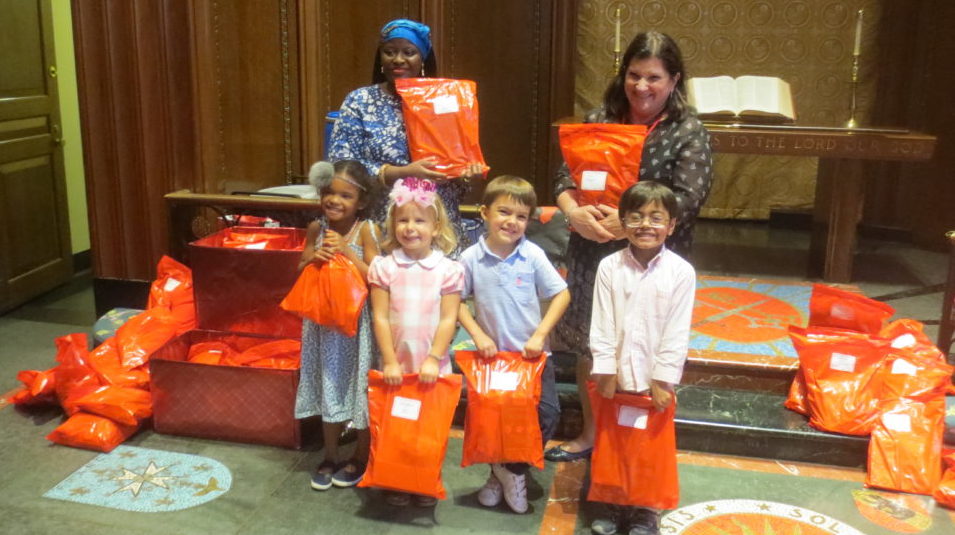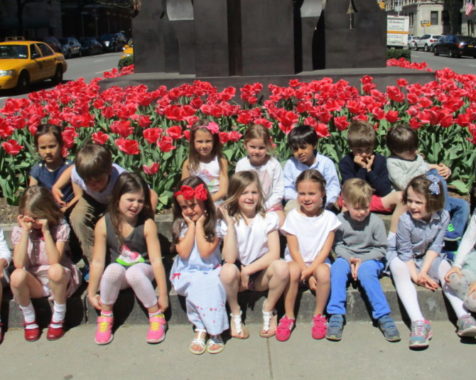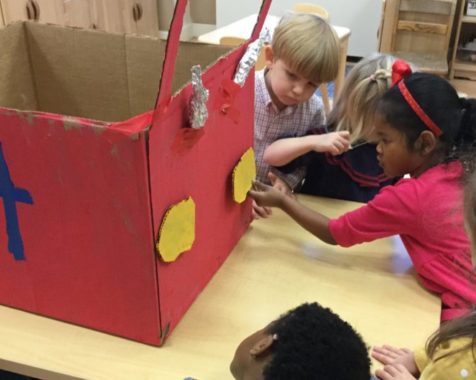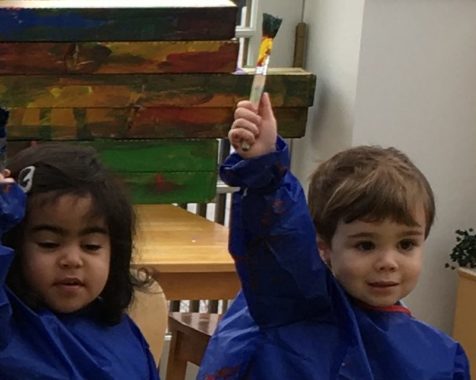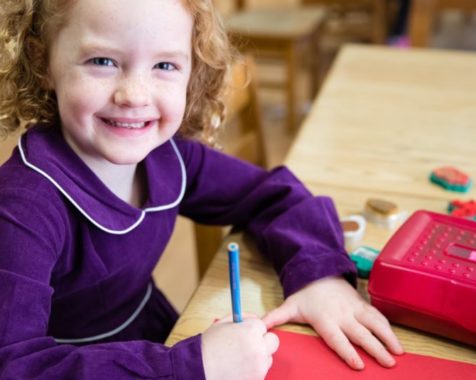This article first appeared in the 2017 issue of Parents League Review.
© 2017 Parents League of New York www.parentsleague.org.
Introducing Global Empathy
When the Senior Minister at Brick Church asked me in December 2010 if I would help Samuel Enders, a church member and citizen of both Liberia and the United States, I jumped at the opportunity. Sam was looking for help to open a school for destitute children in outer Monrovia, the capital of Liberia, and I was looking for a way to use my knowledge of early childhood education on a broader scale, for a larger cause. Liberia, which consistently ranks as one of the five poorest countries in the world (depending on the metrics used) was particularly compelling.
Not only is Liberia desperately poor, its close relationship with the United States seemed to me to give us a special responsibility to help. Founded by freed slaves sent by the American Colonization Society in the 1820s, the Americo-Liberians held power until the indigenous population staged a coup in 1980. Two civil wars between 1989 and 2003 left the country in ruins, its infrastructure destroyed, and its people demoralized. The plight of Liberia’s children was desperate. It did not occur to me when I said “yes” to Sam that the experience would change not only me, but would also change The Brick Church School. And there were understandable doubts about the project both at our school and in Liberia: Some felt that Liberia is a corrupt country (and it is, but Sam isn’t) that would be best avoided, and that I would be dividing my loyalties (and my fundraising efforts). We overcame these obstacles, and the rewards have been immense.
Beyond Egocentrism
When I was studying early childhood education in graduate school (admittedly, a long time ago), psychologist Jean Piaget’s view of childhood was gospel: Young children were egocentric until the age of 7. He based this claim on a study that put young children in front of a plaster mountain range, then showed them pictures of four different views. When he asked them to pick the view that he would see, they picked the view of mountains—the view that they had seen. From this, he concluded that young children are fully egocentric. Based on this, early childhood educators were taught for years to limit curriculum to the here and now, to the direct experience of children. Views on early childhood egocentrism have become more nuanced since those long-distant graduate school days, and Piaget’s study is now seen as revealing more about visual spatial awareness than about egocentrism. It makes good sense for a social studies curriculum for young children to start with themselves, then expand to their families, and to their neighborhoods. But we don’t need to stop there. And in a place like New York City, studying children’s families and neighborhoods often means opening children up to many different cultures, which is a wonderful way to start widening their horizons.
One of the great pleasures of teaching children is to see their excitement about experiences and concepts that take them beyond the here and now— from fantasy tales to Arctic animals to outer space. And just as they can stretch their knowledge and imaginations, they can also demonstrate great empathy. After all, isn’t empathy the ability to imagine how another person feels? From comforting another child who is crying, to asking about someone begging on the street, children can show great depths of empathy. Is it going too far to think that they could also relate to children in Africa? Author Homa Tavangar makes a case for raising children to be global citizens, stating that positive experiences with the world’s cultures enhance our lives. She believes that “gaining confidence and faith dissipates fear and anxiety. If my kids can relate to the world through a lens of hope and love and eagerness, then those children I met in China can be friends and helpmates, instead of enemies and competitors, and an African child can be so much more than someone you pity . . . . Common sense, as well as empirical evidence, demonstrates that international consciousness in children leads to adults who can function more effectively in a global environment.”
Even if young children cannot totally understand what it is like to live without running water or electricity in Liberia, they can develop the disposition to be interested in the cultures and problems of others. Openness to learning about others—just like close-mindedness and the fear of others—can be taught and encouraged. Lillian Katz, who has long studied the role of dispositions in the education of young children, has defined them as relatively enduring attitudes of mind and action, or tendencies to respond to categories of experience across classes of situations.
Although young children may not remember or understand everything they learn about children who live far away, exposure to them may create the disposition to be a global citizen and a feeling of responsibility to help those who have so much less than they do. I can relate this to studying French in school starting in 1st grade. I am not sure I learned that much French having it once a week in elementary school, but it left me with a lasting desire to travel, to learn other languages and cultures. (That’s one of the reasons we have started teaching Spanish at our school.)
A Dream Becomes Reality
In the spring of 2012, we held a benefit to raise money for the African Dream Academy (ADA), Sam’s new school in Liberia. From the very beginning, we involved all our young students, making ADA their project and their dream, as well as ours. Our children brought in books, toys, materials, and all kinds of school supplies; the oldest children sorted everything into categories: all the paper together, markers together, etc. The children saw many barrels sitting in the lobby with their donations waiting to be shipped. When I went to Liberia in August and helped to unpack the barrels, set up classrooms, and train teachers, I brought back photographs for our children of the supplies and toys they had donated getting unpacked by the Liberian teachers, sitting on shelves in classrooms, and of the children exploring them at the school’s orientation. I also brought back carved wooden animals for our block areas, drums and sassas (Liberian instruments made from gourds filled with beans or beads covered with a beaded net that gets pulled). African Dream Academy opened in September 2012 with 128 children age 3 through 4th grade.
In March 2013, two teachers accompanied me to Liberia. Each of our students had made a beaded necklace for each of the Liberian children and we brought back pictures of the children wearing the necklaces. Each of our classes had also made a book about a day in their class at school. We made hardback books with photographs about a day in each of the age levels at African Dream Academy, and those books have become part of our classroom libraries. Our classrooms also contain Liberian clothing and fabrics for dress-up, carvings of African animals, small wooden huts for block play, and Liberian musical instruments. On our last day of 2013, our whole school sang a Liberian song for their parents, with Sam Enders and children on the drums and sassas. We conducted a “sponsor a child’s education” campaign where parents donated to cover a hild’s school expenses; many children were included even in this, drawing pictures and writing letters to the child the family sponsored.
Each year, we have expanded our efforts for ADA, always including our students in whatever project possible. Two teachers from one of our four-fives classes (4 South) accompanied me to Liberia over spring break in 2014. This time all of our children made bookmarks with their pictures on them and we gave each Liberian child a paperback book to take home. Class 4 South made a book about New York City for the Liberian children, mentioning skyscrapers, buses, subways, taxis, elevators and locks on the doors to keep robbers out, and stated and illustrated, “We have rats in New York City!” Our teachers led the Liberian children to make drawings and produce quotes about Liberia, and then put them together in a book for their class back home. We brought back pictures of the ADA children holding the bookmarks and looking at their books.
It excited our children to see their faces on the bookmarks the Liberian children were holding. We held another benefit in 2014 to raise money for the school and the children filled piggy banks that said “Small Change for Big Change.” Their coins added up to over $2,000; our children were thrilled to see the pictures of playground equipment their pennies purchased. Sadly, the focus changed in the 2014-15 school year, when Liberia was overwhelmed by the Ebola crisis; the focus of ADA switched from education to survival, and our greatest goal was to keep the children there alive. Sam Enders started a “Fight Ebola” campaign, educating the surrounding community about the seriousness of Ebola and teaching them prevention techniques. He supplied them with containers of chlorinated water and provided the only ambulance to a local hospital. The efforts at our school focused on fundraising to help the Ebola campaign, and on sending barrels of needed supplies. ADA was closed until March, but teachers provided lessons for parents to pick up. Still wary of Ebola, we did not go over this year, and our efforts again focused on fundraising and sending supplies. The children filled more banks and we had another fundraiser. We look forward to returning in the next school year. The school now has over 450 students from age 3 through 7th grade, and will have an 8th grade in 2016-17. A pediatric health clinic connected to ADA has opened this spring thanks to one of our families. ADA now has a school bus to transport the students, which is life changing, as there is no public transportation in Liberia. The dream is to add a high school in 2017-18. African Dream Academy has served as a role model in Liberia; people come from all over to visit it.
Our Project Goes Viral
Helping African Dream Academy has spread to other New York City independent schools, often through our children’s older siblings. The Nightingale-Bamford School has been a huge support. They have sent many barrels of supplies and uniforms. Their middle school, which has an ADA Club, devoted its “Giving Tuesday” to ADA last year. The students made jewelry to sell. This year we shared a book about ADA with the girls at Nightingale showing the ADA girls in Nightingale uniforms and some of the boys in Nightingale T-shirts! A student who is a member of Brick Church started an ADA Club at Collegiate School. The Collegiate boys wrote letters to the oldest class at ADA and, during the Ebola crisis, made lesson plans for the students to do at home. All Souls School has collected books, and The Buckley School has donated uniforms.
It has been very gratifying to see children going beyond school efforts to help the Liberian children. This shows our efforts are making an impact. A number of our children have set up lemonade stands on their own to raise money for ADA and have sent in coins at times we were not collecting. A student at The Spence School, older sibling to a student at our school, made rubber band bracelets for every student at ADA to deliver when we went in 2014. There were over 250 students at that point! One Nightingale student made collecting books for ADA her mitzvah project.
The World is Our Neighborhood
All the children from our school and these other New York City schools who have contributed their time and efforts to African Dream Academy come from a fairly wide spectrum of social and economic backgrounds, but they are all privileged when compared to the children of Liberia. Their involvement with ADA has helped them to learn about and feel connected to children who would go hungry were it not for ADA, children who live in huts and unfinished buildings, who have no running water to take a bath or even flush a toilet, and who certainly have no TV at home. More important, they have also learned that those same children love books, drawing, singing, building and playing on the playground—just like they They see pictures of those children year after year, and see them grow and change—just like they do. They are not abstract children of hardship, but real kids—just like they are.
We sincerely hope we have planted the seeds for our children at both our school and ADA to grow into true global citizens. In fact, you might say that what we teach our young children today is not really all that different from that curriculum of my graduate school days: empathy for others, a sense of responsibility for the well-being of all, and concern and respect for our friends in the neighborhood. Because, after all, we all want to live in a good neighborhood. It’s not the lesson that has changed, just the definition of neighborhood.
Lydia Spinelli is Director of The Brick Church School, an early childhood school in Manhattan.
References
Katz, Lillian G., and Chard, Sylvia C. Engaging Children’s Minds: The
Project Approach. 2nd ed., Ablex, 2000.
“Piaget’s Stages of Child Development,” In a Nutshell, www.
telacommunications.com/nutshell/stages.htm.
Tavangar, Homa S. Growing Up Global. Raising Children to Be At Home
in the World. Ballantine Books, 2009.
